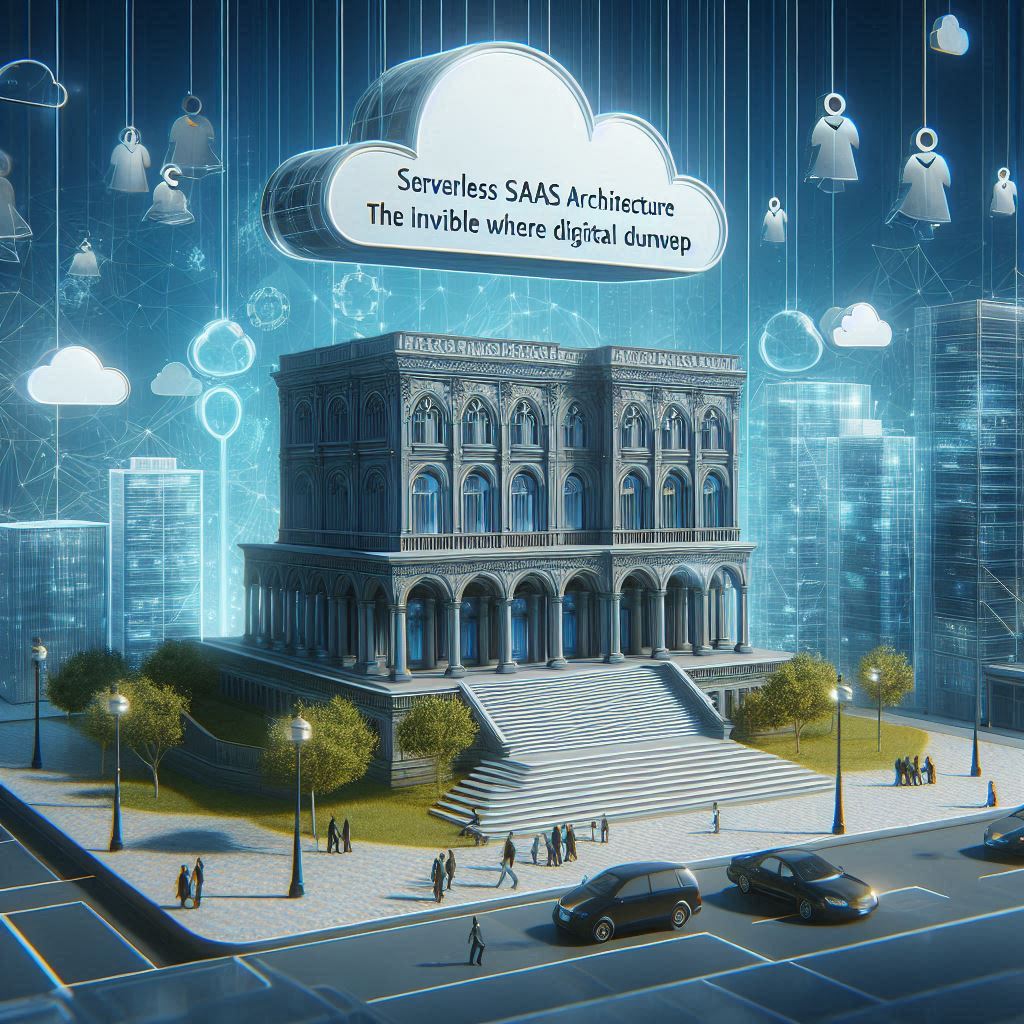Picture a grand theater where every play, every act, and every scene unfolds seamlessly — but there’s no visible stage, no backstage crew, no heavy curtains. The audience is immersed in the performance, unaware of the invisible hands and moving platforms beneath.

This is the magic of serverless SaaS architecture — an invisible stage where applications come alive, effortlessly scaling, adapting, and performing without the cumbersome machinery of traditional servers.
For a SaaS development company, this invisible stage is not just a trend; it’s a revolutionary shift that redefines how software is built, deployed, and experienced.
The Ghostly Orchestra of Serverless
Traditional SaaS applications are like classical theater productions — the stage is set, the props are arranged, and the crew constantly manages the lights and scenery.
Serverless, by contrast, is like a ghostly orchestra that materializes only when the music starts and dissolves when silence falls. There are no servers idling backstage; resources ignite on demand and vanish once the show is over.
This means that a SaaS development company can build products that:
- Scale instantly during a dramatic crescendo of user activity.
- Reduce costs by paying only for actual use.
- Focus on innovation rather than server maintenance.
New Challenges: When the Invisible Becomes a Puzzle
But invisibility comes with its own mysteries.
- Cold Starts — The Brief Pause Before the Music
When functions awaken from their ghostly slumber, there’s a tiny delay — a cold start. For latency-sensitive SaaS products, this pause can feel like a dropped note, breaking the flow of user experience. - Complex Debugging — Finding the Phantom’s Footprints
Without servers to peek into, tracing errors or performance hiccups becomes a hunt for spectral clues. A SaaS development company must equip itself with advanced monitoring and observability tools to illuminate these invisible pathways. - Vendor Lock-In — The Phantom’s Cage
Choosing a serverless platform often means tethering your architecture to a specific cloud provider’s ecosystem. Moving away later is like trying to catch a shadow — difficult and risky.

The Role of a SaaS Development Company in This Invisible Play
A savvy SaaS development company becomes both playwright and stage manager, balancing creativity with technical discipline.
They design modular, event-driven architectures where individual serverless functions are like actors responding to cues — API requests, database triggers, or scheduled tasks. Each function performs its role autonomously but as part of a coordinated ensemble.
More importantly, the company implements best practices to minimize cold starts, optimize function size, and design graceful fallback mechanisms — ensuring the audience experiences a flawless performance.
Security: Guarding the Invisible Backstage
Misconfigured permissions, vulnerable third-party integrations, or overlooked event triggers can expose the SaaS application to risks.
Here, the SaaS development company must embed security into every function, enforcing the principle of least privilege and continuously scanning the architecture for vulnerabilities.
Cost Management: Counting Shadows and Light
The pay-per-use model of serverless is seductive but requires vigilant cost management. Unexpected spikes in traffic or inefficient function design can turn savings into surprise bills.
For a SaaS development company, implementing cost monitoring tools and creating usage forecasts becomes as important as building features. It’s about mastering the art of balancing the ephemeral nature of serverless with concrete budget realities.
Mastering the Invisible
Serverless SaaS architecture invites us into a world where software is not built on heavy machinery but on ephemeral, reactive building blocks — an elegant dance of code, events, and cloud services.
For a modern SaaS development company, mastering this invisible stage is both a challenge and an opportunity — to craft applications that scale gracefully, innovate swiftly, and operate efficiently without the weight of traditional infrastructure.
In this theater without visible servers, the spotlight is on agility, cost-effectiveness, and resilience. The show must go on — and with serverless, it can do so seamlessly, invisibly, and brilliantly.




